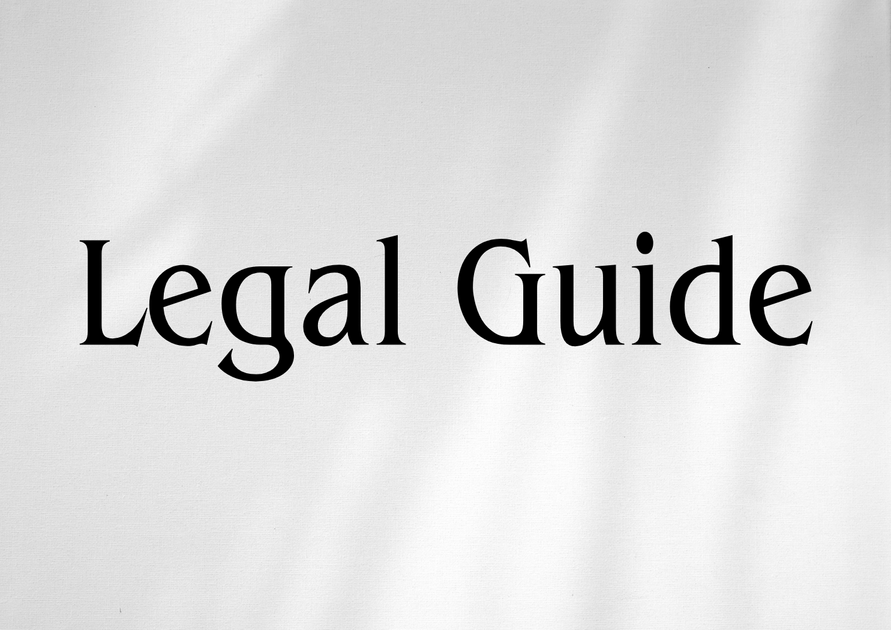Introduction: The Critical Role of Aircraft Insurance in UAE Aviation
The United Arab Emirates (UAE) has firmly established itself as a global aviation powerhouse, connecting East and West through world-class airlines and rapidly expanding airports. Amidst this growth and innovation, the legislative framework underpinning the aviation sector – most notably, the mandatory insurance requirements for aircraft and operators – has evolved significantly. The 2025 updates to UAE aviation law have introduced new standards and compliance duties, raising the stakes for airlines, private operators, lessors, financiers, and insurers alike.
The importance of aircraft insurance in the UAE cannot be overstated. Not only does it mitigate financial risks and promote operational safety, but it also upholds international obligations in line with International Civil Aviation Organization (ICAO) conventions, protects passenger rights, and underpins commercial trust in the industry. In recent years, heightened regulatory attention has focused on ensuring that insurance programs are robust, comprehensive, and fully compliant with modernized legal standards. Failure to adhere can result in severe penalties, operational disruptions, or even criminal liability for operators and executives.
This article provides a detailed, consultancy-grade analysis of the UAE’s aircraft insurance requirements under the latest aviation law developments. It deciphers the legal provisions, offers practical compliance guidance, explores updates from Federal Decree-Law No. 20 of 2022 On Civil Aviation and its 2025 amendments, and assesses the practical impact for aircraft owners, operators, and service providers.
Table of Contents
- UAE Aviation Legal Framework: Overview and Recent Updates
- Core Aircraft Insurance Requirements under UAE Law
- Types of Compulsory Aircraft Insurance and Coverage Levels
- Comparing Legacy and Current UAE Aircraft Insurance Laws
- Practical Implications for UAE Aviation Stakeholders
- Risks and Penalties for Non-Compliance
- Strategies for Legal Compliance and Risk Management
- Case Studies and Hypothetical Scenarios
- Future Developments and Global Best Practices
- Conclusion: Navigating Compliance in a Dynamic Regulatory Environment
UAE Aviation Legal Framework: Overview and Recent Updates
Key Legislation and Regulatory Authorities
At the heart of aviation law in the UAE are several foundational statutes and regulatory entities responsible for oversight:
- Federal Decree-Law No. 20 of 2022 On Civil Aviation (as amended in 2025) – This cornerstone law sets out the principal safety, insurance, licensing, and liability obligations for all forms of civil aviation in the UAE.
- Cabinet Resolution No. 41 of 2021 on Aviation Insurance Requirements – Provides granular detail on types of compulsory coverage, international standards, and enforcement.
- General Civil Aviation Authority (GCAA) – The GCAA is the principal regulatory body overseeing compliance, licensing, and certification of aircraft and operators within UAE airspace and airports.
The most noteworthy development is the 2025 amendments, which closely mirror updated ICAO guidelines and respond to emerging risks such as unmanned aerial vehicles (UAVs), cyber liabilities, and higher minimum insurance thresholds for commercial operations. The revised framework has heightened the need for careful review and active compliance management by all aviation market participants.
Why These Updates Matter
The revamped insurance mandates are designed to bolster market integrity, enhance consumer protection, and align UAE aviation with global best practices. These changes bear critical implications for:
- Airlines and commercial carriers – Faced with higher minimum coverage, broadened risk categories, and more stringent documentation requirements.
- Private and business jet operators – Subject to new fit-for-purpose evaluation of policies by the GCAA.
- Aircraft lessors and financiers – Required to ensure robust insurance arrangements are embedded in lease agreements in accordance with the latest federal requirements.
Core Aircraft Insurance Requirements under UAE Law
Mandatory Insurance Scope and Thresholds
Every aircraft operating from, to, or within the UAE’s territory must demonstrate adequate insurance coverage as a prerequisite for:
- Obtaining or renewing an Air Operator Certificate (AOC)
- Registering an aircraft on the GCAA registry
- Securing flight permits and slot allocations at UAE airports
The principal categories of mandatory insurance, stipulated in Articles 65–74 of the Federal Decree-Law No. 20 of 2022 (as amended), are:
- Third-Party Liability (TPL): Covers injury, death, or property damage to third parties arising from aircraft operations.
- Passenger Legal Liability: Mandates coverage for bodily injury or death of passengers, exceeding the minimums set out in the Montreal Convention of 1999 (ratified by the UAE).
- Baggage and Cargo Liability: Insurance against loss, damage, or delay of passenger baggage and cargo.
- Hull All Risks: Protects against loss or damage to the aircraft itself, whether on ground or in flight, as a key requirement for aircraft financers and lessors.
A dedicated Drone/UAV Insurance Requirement has also been introduced following the 2025 update, recognizing the growing use of commercial and recreational drones.
Reference Table: Main Statutory Obligations
| Insurance Type | Relevant Law | Key Requirement |
|---|---|---|
| Third-Party Liability (TPL) |
Federal Decree-Law No. 20/2022 (Art. 69) |
Minimum cover in line with ICAO limits, adjusted for aircraft type and operation. |
| Passenger Legal Liability | Federal Decree-Law No. 20/2022 (Art. 72) |
Coverage not less than 113,100 SDR per passenger (per Montreal Convention and Cabinet Res. 41/2021). |
| Baggage/Cargo Liability | Federal Decree-Law No. 20/2022 (Art. 73) |
Covers up to 1,131 SDR for baggage/19 SDR per kg for cargo (per passenger/cargo). |
| Hull All Risks | Market Standard (Mandatory by GCAA practice) |
Coverage up to replacement value of the insured aircraft. |
| Drone (UAV) Liability | Federal Decree-Law No. 20/2022 (as amended 2025) (Art. 75) |
Minimum TPL required; level set by GCAA in consultation process (variable by drone category). |
Types of Compulsory Aircraft Insurance and Coverage Levels
1. Third-Party Liability Insurance (TPL)
TPL insurance lies at the core of aviation risk management and compliance. Its scope ensures that injured parties – whether on the ground or in other aircraft – can recover compensation for losses or damages caused by flight operations, accidents, or related incidents. Under the UAE’s enhanced regime, TPL coverage minimums must be:
- Adjusted for aircraft weight and operational profile: For large jets, required minimums now reach US$350 million or higher in many instances.
- Based on ICAO’s classification table, as adopted in UAE law (referenced in GCAA guidance and Cabinet Resolution No. 41 of 2021).
2. Passenger Legal Liability
Operators must maintain insurance sufficient to satisfy their legal responsibility for death or injury to passengers. UAE law sets the minimum at 113,100 Special Drawing Rights (SDR) per passenger, mirroring the Montreal Convention of 1999. Higher levels may be required depending on the airline’s business model and routes flown.
3. Hull All Risks and War Risk Insurance
While not mandated by UAE statute for all operators, hull and war risk insurance is a de facto standard required by aircraft manufacturers, financiers, and lessors – and is invariably demanded by the GCAA in practice. These policies:
- Cover accidental loss, theft, or damage to the aircraft itself
- Include political risk, acts of war, terrorism, and hijacking as separate endorsements
4. Baggage, Cargo, and Mail Liability
Operators must insure against risks related to passenger baggage, shipped cargo, or mail. Compensation thresholds are:
- 1,131 SDR per passenger for baggage
- 19 SDR per kilogram for cargo
as stipulated in Federal Decree-Law No. 20/2022 and Article 22 of the Montreal Convention.
5. UAV and Drone Insurance
In response to rapid growth in drone activities, the 2025 update now requires all commercial drone operators (and some classes of recreational users) to secure third-party liability insurance, with policy details depending on size, weight, and use case, as established by GCAA guidelines in accordance with Article 75 of the Civil Aviation Law.
Recommended Visual: Coverage Map Infographic
Alt Text: Infographic showing types of mandatory aircraft insurance and coverage amounts under UAE law.
Caption: Overview of essential insurance coverage for aircraft and drone operators in the UAE.
Description: Visual representation of all key insurance categories, minimum coverage, and beneficiaries under UAE aviation regulations, enhancing stakeholders’ understanding of obligations.
Comparing Legacy and Current UAE Aircraft Insurance Laws
The following table offers a comparative assessment of aircraft insurance mandates under the superseded Federal Law No. 20 of 1991 (as previously amended) and the present-day Federal Decree-Law No. 20 of 2022 (2025 Amendments):
| Legal Framework | Prior to 2022 | 2022 Law with 2025 Amendments |
|---|---|---|
| Third-Party Liability (TPL) | Coverage minimums less rigorously enforced; lower thresholds (< US$150m typical). | Strict minimums aligned with ICAO table; GCAA can audit and revise upward based on risk profile (US$200–350m+). |
| Passenger Liability | Reference to earlier Warsaw Convention figures (lower SDR sums). | Fully incorporates Montreal Convention (113,100 SDR per passenger); periodic adjustment mandated. |
| Baggage/Cargo Insurance | General references only; not always mandatory for non-scheduled carriers. | Explicit coverage requirements; oversight now includes air taxi, charter, and drone operations. |
| Drone/UAV Insurance | Not regulated. | Compulsory third-party liability for commercial drones; variable by operator class and drone size. |
| Penalties | Limited fines, fewer enforcement actions. | Significant administrative sanctions, fines (up to AED 2 million), risk of aircraft grounding and criminal liabilities for chronic non-compliance. |
Practical Takeaway
Stakeholders must now treat insurance as an actively managed legal function, requiring annual review and GCAA validation, not a static administrative duty.
Practical Implications for UAE Aviation Stakeholders
For Airlines and Charter Operators
Compliance begins at the point of insurance policy negotiation. All relevant policy documents must:
- Be approved by a UAE-licensed insurer or an international carrier recognized by the Central Bank of the UAE
- Explicitly cover the entire declared scope of operation (scheduled, charter, or ad hoc flights)
- Include war, terrorism, and unlawful seizure endorsements where required
Insurance evidence must be submitted during:
- GCAA aircraft registration (including proof of continued coverage at annual renewal)
- Each Air Operator Certificate (AOC) application/renewal
For Private Owners and Leasing Companies
Lessors bear a legal and commercial obligation to include robust insurance clauses in all lease agreements, requiring:
- Lessee procurement of GCAA-compliant insurance, naming the lessor as an additional insured
- Automatic notification rights for any policy lapse or material change
- Mandatory hull and liability protection up to full asset value and operational risk exposure
For Drone and UAV Operators
Many commercial drone operators are unaware that third-party liability coverage is now mandatory. Failure to show evidence of insurance at licensing will result in:
- License suspension/denial of flight permissions
- Potential civil and criminal liability for accidents
Recommended Visual: Sample Compliance Checklist Table
| Compliance Step | Status | Responsible Party |
|---|---|---|
| Obtain GCAA-approved insurance policy(ies) | ✓/Pending | Accountable manager, legal counsel |
| Submit proof to GCAA registry | ✓/Pending | Compliance officer |
| Annual renewal and risk review | ✓/Pending | Risk manager, insurer |
| Update lessor, third party on changes | ✓/Pending | Legal/Contracts |
Risks and Penalties for Non-Compliance
Administrative and Criminal Penalties
The penalties for failing to maintain compliant aircraft insurance in the UAE have escalated significantly:
- Administrative fines of up to AED 2 million (per Federal Decree-Law No. 20/2022, Art. 118, as amended 2025)
- Immediate grounding of uninsured aircraft by GCAA order
- Possible cancellation of Operator Certificates
- Civil liability for uncovered damages
- Referral for criminal investigation in cases involving gross negligence or deliberate misrepresentation
These risks extend to responsible officers and ultimate beneficial owners, not just the operating company or pilot.
Visual: Penalty Comparison Chart
| Non-Compliance Scenario | Pre-2022 Penalty | 2025 Law Penalty |
|---|---|---|
| No valid insurance at time of accident | Monetary fine (AED 50,000–250,000) | AED 2,000,000; license revocation; potential criminal charges |
| Policy expired and not renewed | Warning notice and temporary suspension | Aircraft grounded; repeat offenders blacklisted |
| Use of foreign insurer not recognized by GCAA | No specific penalty | Immediate policy rejection and fine; notification to Central Bank |
Strategies for Legal Compliance and Risk Management
Essential Steps for Operators and Owners
- Annual Policy Review: Conduct proactive annual audits of all insurance policies for compliance with updated law and GCAA guidance.
- Legal Counsel Involvement: Engage UAE law-qualified counsel with aviation expertise to negotiate, draft, and regularly update insurance terms.
- Dynamic Contracting: Use template lease and finance agreements incorporating updated insurance and notification requirements, referencing explicit UAE law obligations.
- Stakeholder Training: Deliver tailored compliance training for management, pilots, ground crew, and legal personnel regarding reporting duties and documents retention.
- Automation/Monitoring: Deploy digital compliance tools to monitor renewal dates, alert for expiring coverage, and document submissions to GCAA platforms.
Visual: Compliance Strategy Flowchart
Alt Text: Flowchart showing steps to achieve and maintain insurance compliance under UAE aviation law.
Caption: Stepwise roadmap for aviation businesses to avoid compliance risks and penalties.
Description: Flowchart detailing annual review, policy updating, training, and documentation processes, with calls to action at each stage for aviation industry compliance teams.
Case Studies and Hypothetical Scenarios
Case Study 1: International Airline Launching UAE Operations
Background: A leading European airline obtains a new Air Operator Certificate from the GCAA in 2025. During due diligence, it discovers its previous policy – valid in its home state – is not recognized by the UAE regulator.
Issue: The GCAA demands proof of insurance issued or officially approved by a Central Bank-recognized insurer in the UAE. This requires urgent renegotiation with existing brokers and insurers, plus policy upgrade to include expanded terrorism and war risk cover.
Lesson: Ensuring forward engagement with UAE legal and insurance experts is essential for both new entrants and legacy carriers expanding into the region.
Case Study 2: Drone-Based Logistics Operator
Background: A logistics start-up using drones for last-mile delivery applies for permits in Abu Dhabi.
Issue: The operator fails to provide evidence of third-party liability insurance, leading to regulatory suspension of its flight operations. The GCAA further mandates coverage proportional to each drone’s size and maximum take-off mass.
Lesson: The 2025 legal update imposes specific liability and insurance conditions for UAVs, requiring all entrants to consult both GCAA guidelines and specialist insurance brokers at the earliest planning phase.
Hypothetical Example: Private Jet Owner with Overseas Insurance
Scenario: An UHNW individual bases a new private jet in Dubai, insured by a non-UAE policy. Following a minor runway incident, a claim is denied by the GCAA due to lack of local regulatory approval for the insurer.
Solution: Immediate rectification involves securing a new GCAA-compliant policy, with legal review to ensure the lessor is included as a named insured and all liability minimums are observed.
Future Developments and Global Best Practices
Anticipated Regulatory and Industry Shifts
The UAE’s implementation of the 2025 law signals further developments on the horizon:
- Integration of real-time insurance verification systems with GCAA licensing platforms
- Mandatory cyber liability insurance for advanced avionics and networked aircraft
- Evolution of insurance requirements for new mobility solutions including air taxis and urban eVTOL platforms
- Tighter links between insurance compliance and international codesharing or leasing arrangements
Global Best Practices for UAE Stakeholders
- Engage with specialist brokers and law firms with cross-jurisdictional aviation experience
- Maintain ‘above minimum’ coverage as a commercial norm to enhance risk resilience
- Regularly review international conventions and UAE regulatory notices for emerging risks and legal interpretations
Conclusion: Navigating Compliance in a Dynamic Regulatory Environment
The revised UAE aircraft insurance framework reflects the country’s commitment to upholding world-class safety, liability, and loss mitigation standards within a rapidly evolving aviation sector. With authorities such as the GCAA enforcing higher coverage thresholds, broader insurance categories, and robust penalties for non-compliance, businesses and individuals must treat insurance as a core strategic and legal function.
By drawing on qualified legal advisors, proactive policy reviews, and digital compliance solutions, UAE-based operators, aircraft owners, and aviation service providers can protect their interests, fulfill their legal duties, and capitalize on the professional opportunities offered by regional and global air transport markets in the years ahead. As the legal landscape continues to advance, effective compliance will increasingly become a marker of operational excellence and sustainable growth.
For stakeholders ready to adapt, these developments offer the opportunity to combine world-leading aviation operations with best-in-class legal compliance, ultimately reinforcing the UAE’s standing as a nexus of safe, innovative, and risk-managed air transport.



